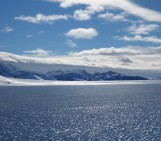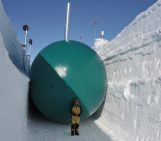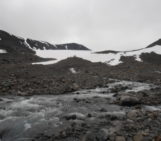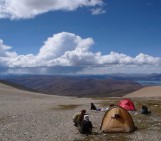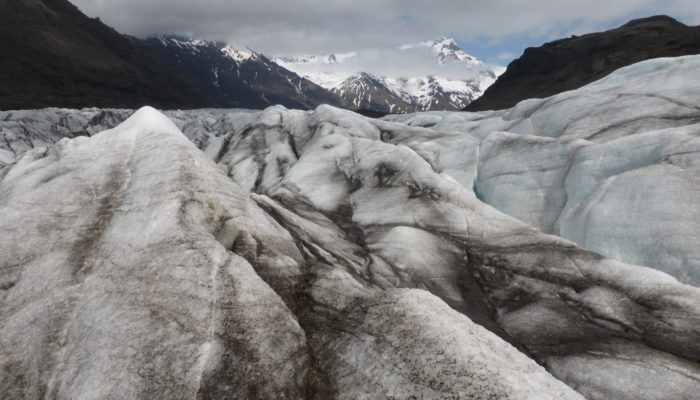
As the Arctic is warming faster than the global average, Arctic glaciers are rapidly melting. My research is about the fate of glacial organic carbon when the ice containing it melts. To investigate these processes, I travelled to several glaciers, an activity full of challenges… and rewards!
My research
Glacier ice covers about 11% of Earth’s land surface, and contains within it a globally significant reservoir of easily degradable carbon, known as glacial organic carbon (GOC). GOC is found within glacier ice, subglacial sediments, as well as the sediments and soils located close to the ice front of a glacier.
Much of the GOC is situated within the Arctic, a region that is already experiencing the most rapid and largest amount of warming on Earth. As the organic material melts out of the ice and degrades, it releases greenhouse gases into the atmosphere. This process creates a self-reinforcing cycle, leading to a further warming of the Arctic region, and therefore more organic material melting out.
There has been little research on the release of GOC so far and as with any new area of research, more studies are needed! Especially, we need measurements from several locations to try and reduce the uncertainties in our knowledge of the amount of GOC. This is where I come in! The aim of my research is to clarify the role of GOC as a carbon source in the fast-changing Arctic region by comparing three contrasting catchments all currently losing their glaciers: Vatnajökull ice cap in Iceland, Tarfala in Sweden, and Zackenberg in Greenland. This topic gives me the opportunity to travel to several amazing locations, but also means the challenges of Arctic fieldwork are multiplied!
Challenge 1: Permits and Visas
Every country I have visited during my PhD has its own policy when it comes to obtaining permits to access sites, collect and export samples. While the process can be quite bureaucratic and slow, the key is to start the application process well ahead of the deadline. So far, this has worked for me. However, as a Kazakhstan citizen, I also require a visa to travel to most of these countries. Even though the same approach of giving myself a head start on the application process has worked, when there are back-to-back field campaigns in two different countries, it can get stressful and a little complicated. Luckily, for me, it has always worked out!
Challenge 2: Logistics
Booking a flight and accommodation, and hiring a car online is a common practice these days whether you are travelling with work or going on a holiday. However, when I hear the word logistics the first thing that comes to mind is “how am I going to ship my equipment and, more importantly, how am I bringing back my precious samples?” I’ve tried a variety of ways: shipping the equipment beforehand and shipping it back, arranging postal delivery of my samples, as well as taking extra luggage on the plane with me – double wrapping glassware and making sure I stick on several “fragile” labels to good measure. Taking the equipment, and especially my samples, on the plane seems a better option as it gives you peace of mind – I “knew” where my bags are and was “sure” they would arrive at the final destination with me. On top of it, it is actually kinder on your budget to pay for couple extra bags rather than shipping. The one downside was that this way I had always had a couple of broken glass bottles and spilled samples. But hey, that is why you collect samples in triplicates 😉
Challenge 3: Actually being in the field!
After months of planning, obtaining permits, visas, ordering equipment and consumables, packing and shipping, we would finally arrive in the field. I will not surprise anyone if I said that working in the Arctic even in the summer gets cold, windy and wet. On top of that, we would have to carry around heavy backpacks while trying to keep our footing on slippery lichen-covered rocks. Some sites, like the Vatnajökull ice cap in Iceland, are easy to access, Tarfala valley in Sweden requires a bit more effort to reach, while it takes a couple days of camping to get to a glacier in Zackenberg, Greenland. That said, if you love what you do, you don’t notice the effort. The Arctic has the most amazing, beautiful and unique scenery.
Challenge 4: Evenings
The “fun” part of research when working with water samples was usually the evenings. In order to reduce the amount of filtrate that needed bringing back, I would spend my evenings filtering water samples collected earlier in the day. Thankfully, I did not have to do it by hand, but instead using extremely loud electric pumps – they got the job done but scared away the rest of the field team in process!

Figure 3: Filtering station set up at the kitchen of a field accommodation, Iceland 2018 [Credit: Saule Akhmetkaliyeva].
In summary: a hugely rewarding experience!
Fieldwork can have many challenges associated with it. Planning ahead, and being well-equipped and well-prepared therefore makes your life so much easier! Most importantly, as long as you enjoy being in the field, all the challenges are worth it — especially if you have likeminded people for company. Just make sure you have enough energy, are well rested, and take breaks if you are tired. After all, it is a great opportunity to experience a unique and amazing environment, see the changes happening to our home planet with your own eyes, whilst making a positive difference…

Figure 4: Disturbingly warm August at in beautiful Zackenberg, Greenland 2019 [Credit: Saule Akhmetkaliyeva].
Edited by Andy Smedley and Clara Burgard
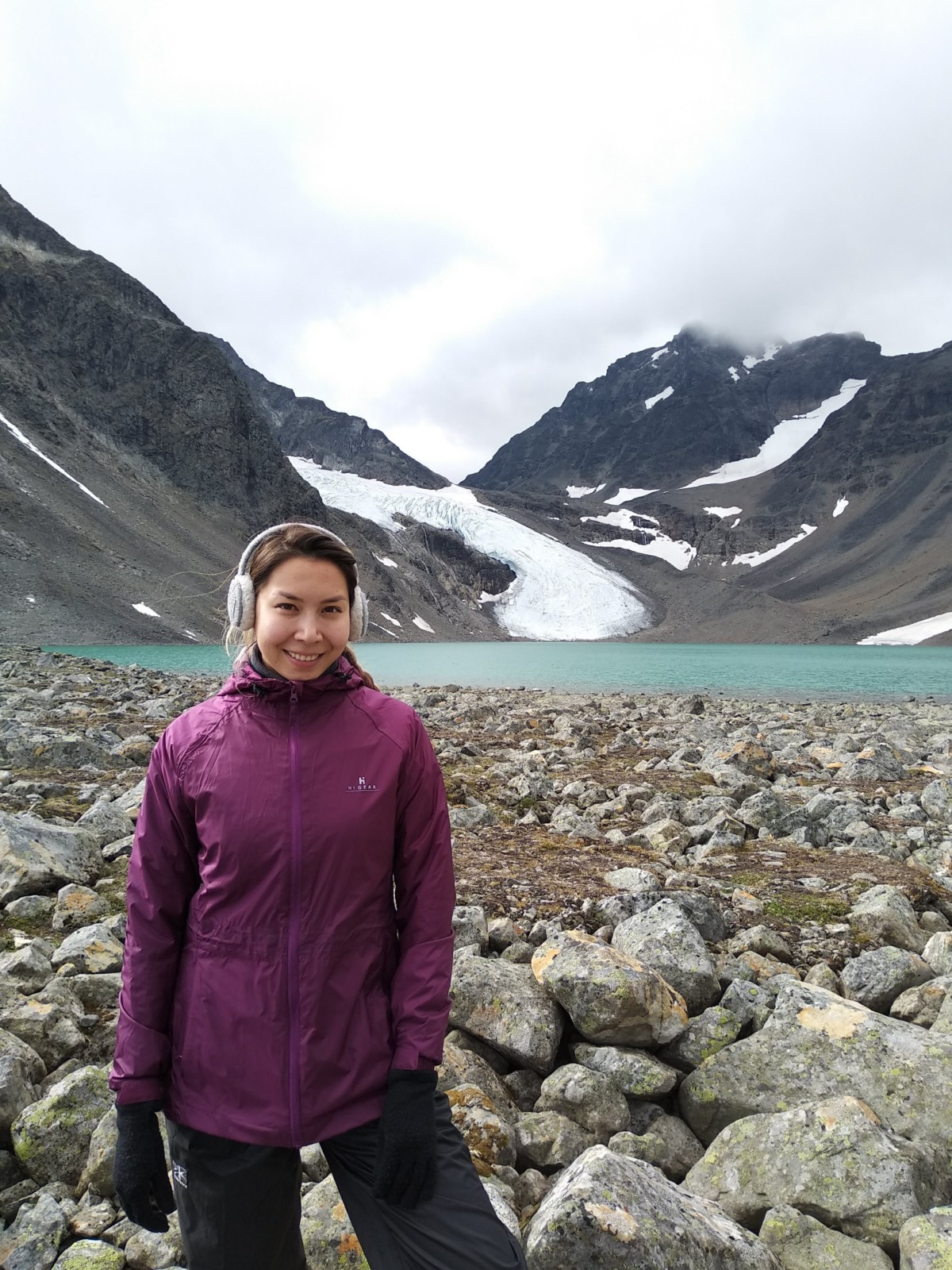 Saule Akhmetkaliyeva is a PhD student at MMU (Manchester Metropolitan University), UK. She studies organic carbon transport from receding glaciers in northern latitudes. Saule is also part of the UK Polar Network committee. Contact email: saule.akhmetkaliyeva@stu.mmu.ac.uk.
Saule Akhmetkaliyeva is a PhD student at MMU (Manchester Metropolitan University), UK. She studies organic carbon transport from receding glaciers in northern latitudes. Saule is also part of the UK Polar Network committee. Contact email: saule.akhmetkaliyeva@stu.mmu.ac.uk.


